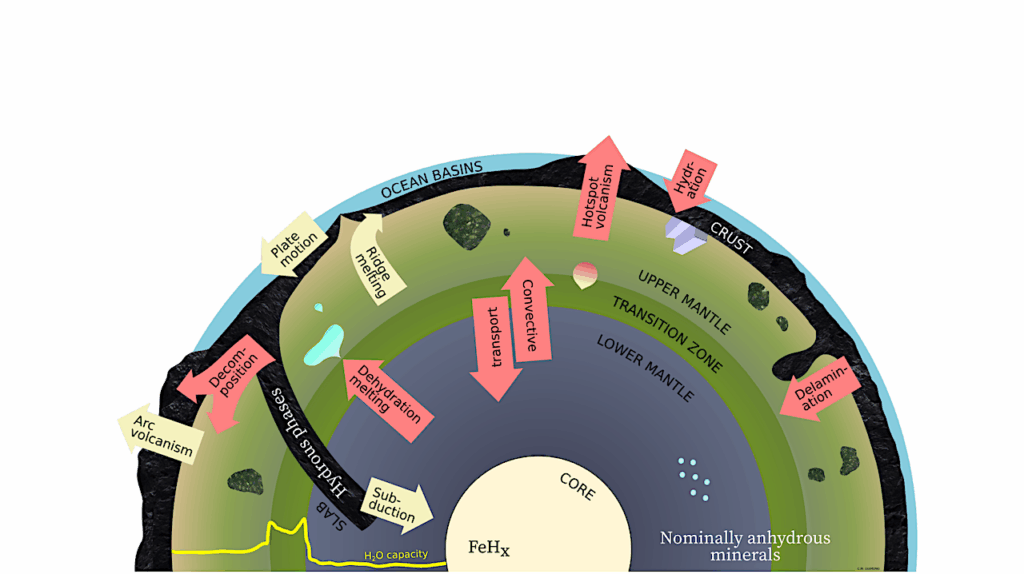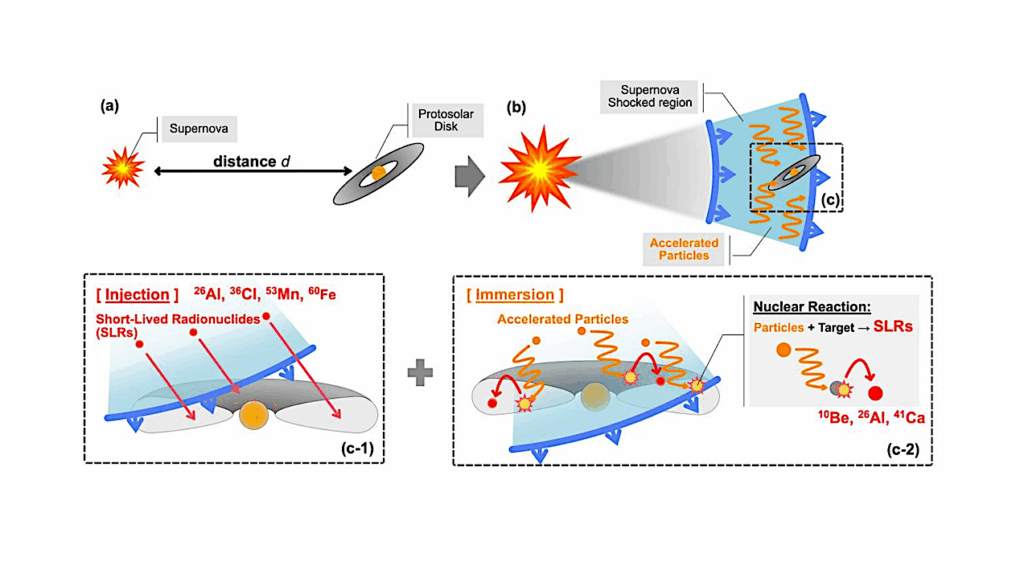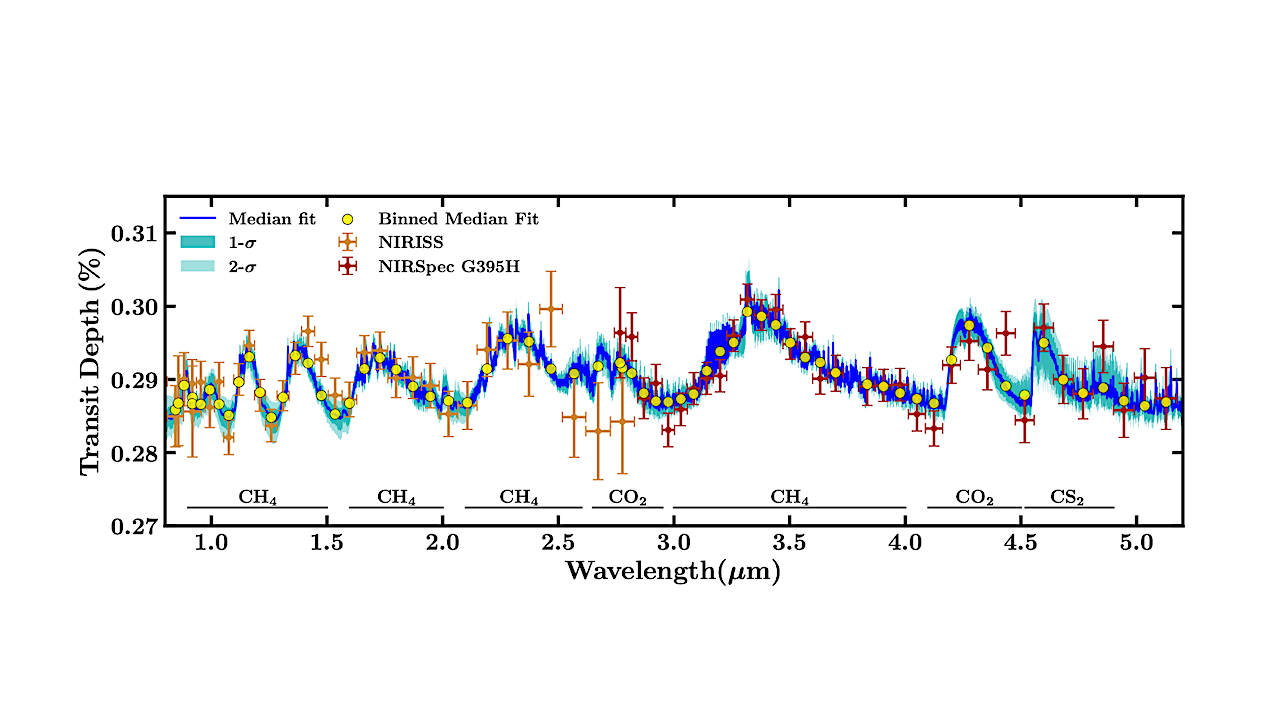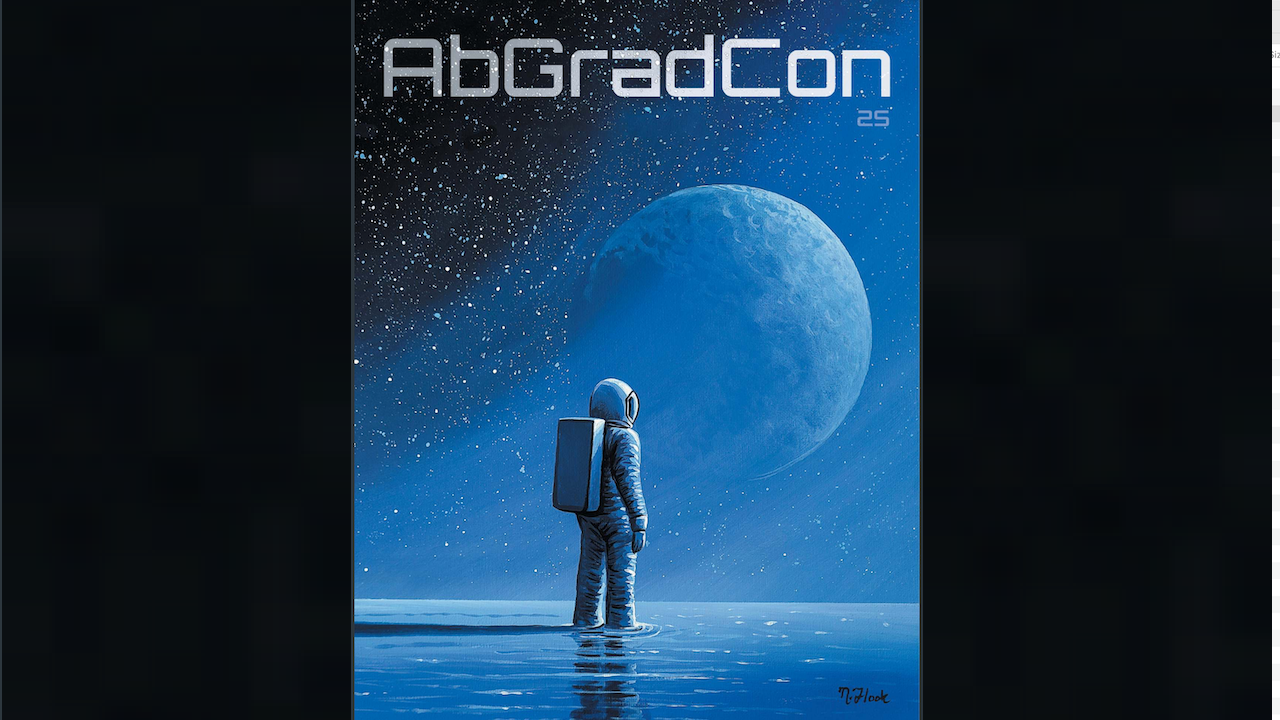Now Reading: Refractive Indices Of Photochemical Haze Analogs For Solar System And Exoplanet Applications: A Cross-laboratory Comparative Study Between The PAMPRE And COSmIC Experimental Set-ups
-
01
Refractive Indices Of Photochemical Haze Analogs For Solar System And Exoplanet Applications: A Cross-laboratory Comparative Study Between The PAMPRE And COSmIC Experimental Set-ups
Refractive Indices Of Photochemical Haze Analogs For Solar System And Exoplanet Applications: A Cross-laboratory Comparative Study Between The PAMPRE And COSmIC Experimental Set-ups


Transmission spectra obtained on the Titan 1 and Exoplanet 2 PAMPRE haze analogs (see Table 1) from 0.3 to 2.5 µm. (top) Data and analysis using the Swanepoel method for the Titan 1 sample produced from a gas mixture of 90% N2 and 10% CH4. (bottom) Data and best fit using Cauchy and Tauc-Lorentz dispersion laws for the Exoplanet 2 analog produced from 95% Ar and 5% CH4 in the initial gas mixture. — astro-ph.EP
Previous observations of Titan, Pluto and Solar System gas giants along with recent observations of exoplanet atmospheres with the James Webb Space Telescope taught us that photochemical hazes are ubiquitous and form in a variety of temperature, gas composition and irradiation environments.
Despite being crucial to understand their impact on observations and on the planetary radiative budget, the refractive indices of these haze particles are unknown and strongly influenced by changes in the gas phase chemistry.
In this study, we perform a cross-laboratory investigation to assess the effect of the experimental set-up and gas composition on the refractive indices of Titan, Pluto and exoplanet haze analogs. We report new data in a broad spectral range from UV to far-IR (up to 200 microns) for future use in climate models and retrieval frameworks.
Thomas Drant, Ella Sciamma-O’Brien, Lora Jovanovic, Zoé Perrin, Louis Maratrat, Ludovic Vettier, Enrique Garcia-Caurel, Jean-Blaise Brubach, Diane H. Wooden, Ted L. Roush, Claire L. Ricketts, Pascal Rannou
Comments: Accepted for publication in A&A
Subjects: Earth and Planetary Astrophysics (astro-ph.EP)
Cite as: arXiv:2511.15310 [astro-ph.EP] (or arXiv:2511.15310v1 [astro-ph.EP] for this version)
https://doi.org/10.48550/arXiv.2511.15310
Focus to learn more
Submission history
From: Thomas Drant
[v1] Wed, 19 Nov 2025 10:22:05 UTC (12,379 KB)
https://arxiv.org/abs/2511.15310
Astrobiology,
Stay Informed With the Latest & Most Important News
Previous Post
Next Post
-
 012024 in Review: Highlights from NASA in Silicon Valley
012024 in Review: Highlights from NASA in Silicon Valley -
 02Panasonic Leica Summilux DG 15mm f/1.7 ASPH review
02Panasonic Leica Summilux DG 15mm f/1.7 ASPH review -
 03From Polymerization-Enabled Folding and Assembly to Chemical Evolution: Key Processes for Emergence of Functional Polymers in the Origin of Life
03From Polymerization-Enabled Folding and Assembly to Chemical Evolution: Key Processes for Emergence of Functional Polymers in the Origin of Life -
 04How New NASA, India Earth Satellite NISAR Will See Earth
04How New NASA, India Earth Satellite NISAR Will See Earth -
 05And Thus Begins A New Year For Life On Earth
05And Thus Begins A New Year For Life On Earth -
 06Astronomy Activation Ambassadors: A New Era
06Astronomy Activation Ambassadors: A New Era -
07SpaceX launch surge helps set new global launch record in 2024





















